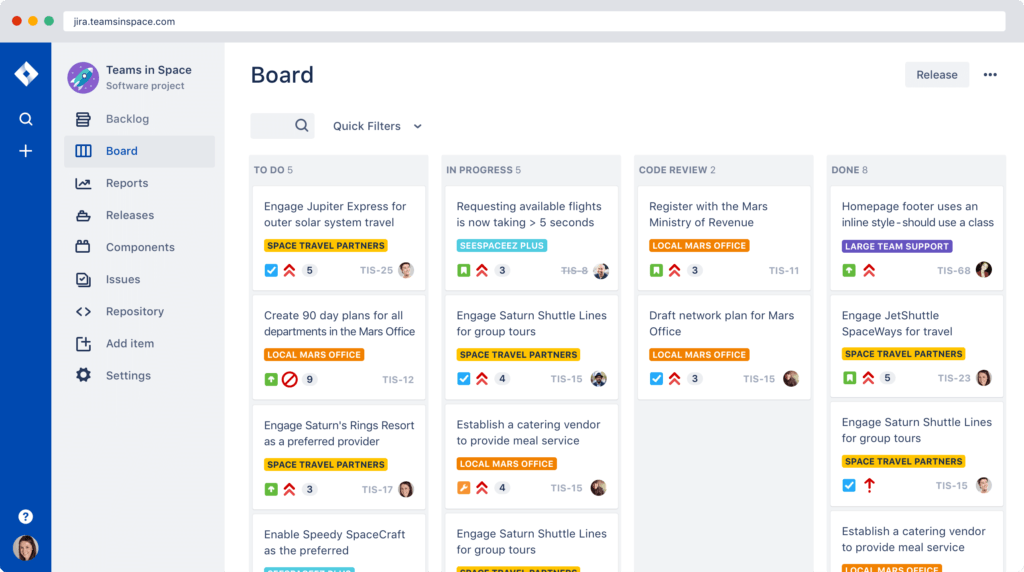What is Agile Content Marketing?
Whether it be at the startup or enterprise level, if you’ve worked in the corporate world in the last 20 years, you’ve probably run into Agile.
Agile, which started as a way to help software teams plan and execute their products more efficiently, has crept into practically every product-making team out there — including content marketing.
I’ve worked for more than a few startups that have used Agile to organize not only their software teams, but their editorial, product management and, yes, their marketing teams, as well.
Basically, the a
The History of Agile
Before we can get into the story behind agile in content marketing, we need to talk about those software developers who used Agile first.
The Beginning of Agile
AgileSherpas provides a pretty good summary:
Before Agile existed, software developers used what’s called a waterfall method to manage projects. Basically, the product manager would gather all the information needed to create a new software product. They would create a huge spec doc, called the requirements, and pass that on to the developers.
Developers would work in their own little silo to create and deliver a product (usually late and over-budget) only when it was completely finished. It was then tested and maintained.
Sounds clunky, right?
That’s where Agile comes in. Agile breaks products down into three parts: iterate, test, learn. A product is not released when the developers call it done. Instead, it’s broken up into smaller tasks that can be completed in smaller chunks of time. The work is then tested and either tweaked or released as final.
Curious about how to implement Agile? That a look at these use cases.
You can see how Agile is great for content marketers, right? We gather data and create a hypothesis about the kinds of content we should create. Then we create said content. We A/B test and collect more data before we decide whether to create new blog posts or improve existing content.
Organizing Work in Agile
There are a few ways to organize work in Agile. Here is a summary of each.
Scrum
Scrum is probably the most well-known way to organize work in Agile. In Scrum, your team collects a list of work tasks, called the backlog, and writes very detailed descriptions of what needs to be done.
Think of it as a wine cellar of work. You have many bottles to choose from, all waiting for the right time to be brought up.
From there, a scrum master chooses a smaller list of tasks to bring to the team, like a sommelier creating the wine menu.
The team then decides which to tackle in a two- to four-week chunk of time, called a sprint. All work that goes into the sprint must be ready for release by the end date.
The sprint begins, the tasks are completed, and the team meets to assess how well the sprint went at the end.
A lot of teams use Atlassian’s JIRA software to organize their sprints.

Kanban
Kanban is different because it doesn’t rely on linear sprints to get work done. Instead, a team creates a board (think Trello) with various stages for work (not started, in progress, ready for review, etc.). Tasks move through boards as they complete different stages.
That usually means they pass through different stakeholders in the Kanban process.
There may be no time limit on tasks, but it’s easy to see when teams can add another task and where assignments are getting held up.

Scrumban
Scrumban is precisely what it sounds like. It’s a combination of Scrum and Kanban. Usually, that means your team uses a kanban board in a Scrum timeframe.
Your Own Recipe
I’ve used all three of these methods for different teams and different companies. I can’t say that I favored one over the other because each one was chosen for how well it worked for each team’s work style.
Each marketing team has its own set of advantages, challenges, and surprises. Without fail my teams ended up tailoring the Agile process to meet their needs.
In the few times I saw Agile rigidly forced on a team, it inevitably ended in the breakdown of the product or content development process. If you need more help, take a look at our list of Agile Content Marketing Resources.
Agile in Content Marketing
The first marketing Agile manifesto appeared in 2012, according to AgileSherpas. It stresses the following values:
- Validated learning over opinions and conventions
- Customer-focused collaboration over silos and hierarchy
- Adaptive and iterative campaigns over Big Bang campaigns
- The process of customer discovery over static prediction
- Flexible vs. rigid planning
- Responding to change over following a plan
- Many small experiments over a few large bets
Now, there’s a difference between being agile and Agile. An agile marketing team can work quickly and pivot easily to respond to change. An Agile marketing team works in an organized, methodical manner toward a goal of constant testing and improvement.
Eager to get started? We’ve written a post to make Agile simple.
The Benefits of Agile Development for a Content Team
There are so many benefits Agile brings to Content Development. Here are just a few of my favorites.
A Focus on One Initiative at a Time
I absolutely love Agile for this. We all know how hard it can be to prioritize your own projects, nevermind those coming from other teams and stakeholders. Suddenly, you have a pile of work that’s all deemed critical to the company and no idea where to start.
With Agile, all stakeholders come together to prioritize projects and organize them into real work done in a defined period of time. When one task is complete, you move on to the next one on the list of priorities.
Everyone understands where their project is in the line and when it will get done.
No More Interruptions
Because you have a defined list of priorities to work through, you’re less likely to run into interruptions.
The book of work in Agile is written in stone. Unless something comes up that is detrimental to the health of the company, no team leader can rearrange your work with a last-minute project.
It must now go through review and placement in a sprint or on the board.
And if it is essential, it takes the place of another task in a sprint. It doesn’t add to the workload.
That may sound pretty rigid, after all, Agile is supposed to be just that. But the ability to pivot comes in between sprints or tasks. Because tasks are broken down into small periods of work, other tasks can be considered pretty frequently.
You wouldn’t, however, interrupt a task in progress.
The Ability to Test Frequently
Because you’re working and releasing in short bursts of time, you get plenty of opportunities to review your analytics and test your content.
It also means you can make changes and improvements more frequently, too, without a lot of discussion or planning meetings.
Creating Content With Real Data
And once you’ve tested that content, you have data to back up your recommendations.
In waterfall, a lot of development was done on an educated guess. Now, you can pull from page analytics, conversion rates, SERP ranking, email opens and customer feedback to make informed decisions about your content strategy.
How to Develop an Agile Content Marketing Team
An Agile content marketing team is actually going to include more than Marketing and
Who you include depends on what you’re content marketing strategy is. Just make sure you limit each team to one representative who communicates with their team members to collect and filter all requests.
If you use Scrum, you’ll need a scrum master to oversee the creation of tasks and their movement from backlog to ready for release.
For Kanban, you’ll need an owner of the board who can move tasks through the process and work with stakeholders to clear up bottlenecks.
The scrum master or board owner will most likely run sprint or board planning meetings, as well.
The final piece of an Agile team is task owners. Every task should be assigned to the appropriate person on your team. That person will be responsible for task completion. While they may get help from other team members, it is ultimately up to them to see it through.
With the process of iterate, test, learn, you would think Agile was made for content marketing. It fits so well with our own content creation processes.
Becoming an Agile content marketing team can really help you focus on well-tested, quality content that accomplishes your content marketing goals.
Laurie is a freelance writer, editor, and content consultant and adjunct professor at Fisher College. Her work includes the development and execution of content strategies for B2B and B2C companies, including marketing and audience research, content calendar creation, hiring and managing writers and editors, and SEO optimization. You can connect with her on Twitter or LinkedIn.
